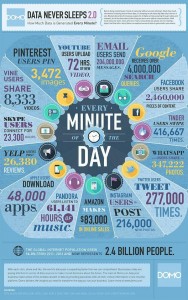Why Does the FBI Have To Manufacture Its Own Plots If Terrorism And ISIS Are Such Grave Threats? by Glenn Greenwald.
From the post:
The FBI and major media outlets yesterday trumpeted the agency’s latest counterterrorism triumph: the arrest of three Brooklyn men, ages 19 to 30, on charges of conspiring to travel to Syria to fight for ISIS (photo of joint FBI/NYPD press conference, above). As my colleague Murtaza Hussain ably documents, “it appears that none of the three men was in any condition to travel or support the Islamic State, without help from the FBI informant.” One of the frightening terrorist villains told the FBI informant that, beyond having no money, he had encountered a significant problem in following through on the FBI’s plot: his mom had taken away his passport. Noting the bizarre and unhinged ranting of one of the suspects, Hussain noted on Twitter that this case “sounds like another victory for the FBI over the mentally ill.”
In this regard, this latest arrest appears to be quite similar to the overwhelming majority of terrorism arrests the FBI has proudly touted over the last decade. As my colleague Andrew Fishman and I wrote last month — after the FBI manipulated a 20-year-old loner who lived with his parents into allegedly agreei target=”_blank”ng to join an FBI-created plot to attack the Capitol — these cases follow a very clear pattern:
The known facts from this latest case seem to fit well within a now-familiar FBI pattern whereby the agency does not disrupt planned domestic terror attacks but rather creates them, then publicly praises itself for stopping its own plots.
….
In an update to the post, Greenwald quotes former FBI assistant director Thomas Fuentes as saying:
If you’re submitting budget proposals for a law enforcement agency, for an intelligence agency, you’re not going to submit the proposal that “We won the war on terror and everything’s great,” cuz the first thing that’s gonna happen is your budget’s gonna be cut in half. You know, it’s my opposite of Jesse Jackson’s ‘Keep Hope Alive’—it’s ‘Keep Fear Alive.’ Keep it alive. (emphasis in the original)
The FBI run terror operations give a ring of validity to the imagined plots that the rest of the intelligence and law enforcement community is alleged to be fighting.
It’s unfortunate that the mainstream media can’t divorce itself from the government long enough to notice the shortage of terrorists in the United States. As in zero judging from terrorist attacks on government and many other institutions.
For example, the federal, state and local governments employ 21,831,255 people. Let’s see, how many died last year in terrorist attacks against any level of government? Err, that would the the 0, empty set, nil.
What about all the local, state, federal elected officials? Certainly federal officials would be targets for terrorists. How many died last year in terrorist attacks? Again, 0, empty set, nil.
Or the 900,000 police officers? Again, 0, empty set, nil. (About 150 police officers die every year in the line of duty. Auto accidents, violent encounters with criminals, etc. but no terrorists.)
That covers some of the likely targets for any terrorist and we came up with zero deaths. Either terrorists aren’t in the United States or their mother won’t let them buy a gun.
Either way, you can see why everyone should be rejecting the fear narrative.
PS: Suggestion: Let’s cut all the terrorist related budgets in half and if there are no terrorist attacks within a year, half them again. Then there would be no budget crisis, we could pay down the national debt, save Social Security and not live in fear.

